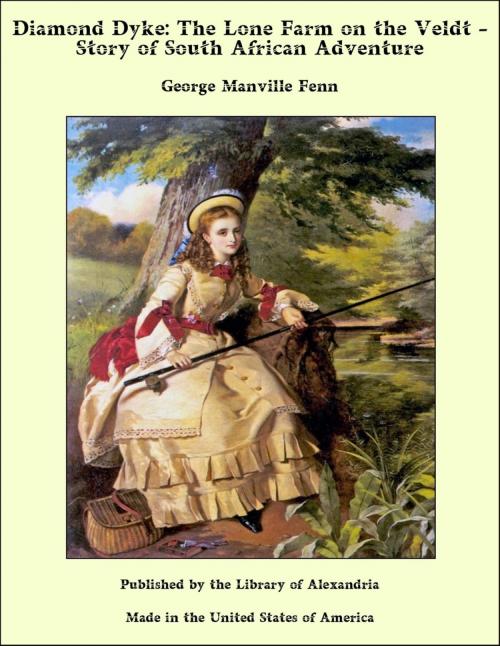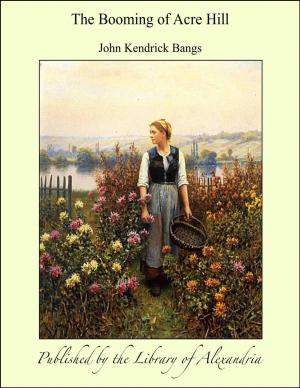Diamond Dyke: The Lone Farm on the Veldt - Story of South African Adventure
Nonfiction, Religion & Spirituality, New Age, History, Fiction & Literature| Author: | George Manville Fenn | ISBN: | 9781465620699 |
| Publisher: | Library of Alexandria | Publication: | March 8, 2015 |
| Imprint: | Language: | English |
| Author: | George Manville Fenn |
| ISBN: | 9781465620699 |
| Publisher: | Library of Alexandria |
| Publication: | March 8, 2015 |
| Imprint: | |
| Language: | English |
Vandyke Emson—the Dyke shouted at—had been the gardener, and so long as he toiled hard, fetching water from the granite kopje springs, a quarter of a mile away, and tended the roots he put in the virgin soil, they rushed up out of the ground; but, as he reasonably said, he couldn’t do everything, and if he omitted to play Aquarius for twenty-four hours, there were the plants that looked so flourishing yesterday shrivelled to nothing. He had planted creepers to run all over the sides and roof, but the sun made the corrugated iron red hot—the boy’s exaggerated figure of speech, but so hot that you could not keep your hand upon the roof or wall—and the creepers found the temperature too much for their constitution, and they rapidly turned to hay. Then he trained up tomatoes, which grew at express speed so long as they were watered, formed splendid fruit, were left to themselves a couple of days, and then followed suit with the creepers. Joseph Emson smiled behind his great beard, and said they were a success because the tomatoes were cooked ready for use; but Dyke said it was another failure, because they were just as good raw, and he did not like to eat his fruit as vegetables cooked in a frying-pan covered with white-wash. Still all was not bare, for a patch of great sunflowers found moisture enough for their roots somewhere far below, and sent up their great pithy stalks close to the house door, spread their rough leaves, and imitated the sun’s disk in their broad, round, yellow flowers. There was an ugly euphorbia too, with its thorny, almost leafless branches and brilliant scarlet flowers; while grotesque and hideous-looking, with its great, flat, oblong, biscuit-shaped patches of juicy leaf, studded with great thorns, a prickly pear or opuntia reared itself against the end gable, warranted to stop every one who approached.
Vandyke Emson—the Dyke shouted at—had been the gardener, and so long as he toiled hard, fetching water from the granite kopje springs, a quarter of a mile away, and tended the roots he put in the virgin soil, they rushed up out of the ground; but, as he reasonably said, he couldn’t do everything, and if he omitted to play Aquarius for twenty-four hours, there were the plants that looked so flourishing yesterday shrivelled to nothing. He had planted creepers to run all over the sides and roof, but the sun made the corrugated iron red hot—the boy’s exaggerated figure of speech, but so hot that you could not keep your hand upon the roof or wall—and the creepers found the temperature too much for their constitution, and they rapidly turned to hay. Then he trained up tomatoes, which grew at express speed so long as they were watered, formed splendid fruit, were left to themselves a couple of days, and then followed suit with the creepers. Joseph Emson smiled behind his great beard, and said they were a success because the tomatoes were cooked ready for use; but Dyke said it was another failure, because they were just as good raw, and he did not like to eat his fruit as vegetables cooked in a frying-pan covered with white-wash. Still all was not bare, for a patch of great sunflowers found moisture enough for their roots somewhere far below, and sent up their great pithy stalks close to the house door, spread their rough leaves, and imitated the sun’s disk in their broad, round, yellow flowers. There was an ugly euphorbia too, with its thorny, almost leafless branches and brilliant scarlet flowers; while grotesque and hideous-looking, with its great, flat, oblong, biscuit-shaped patches of juicy leaf, studded with great thorns, a prickly pear or opuntia reared itself against the end gable, warranted to stop every one who approached.















